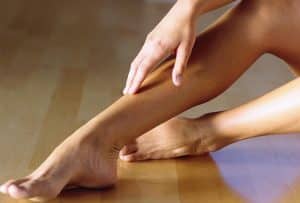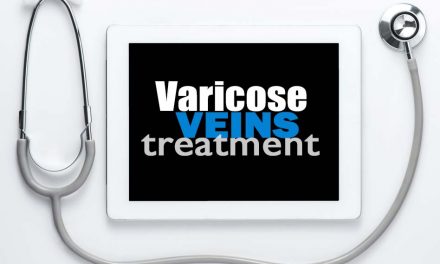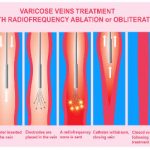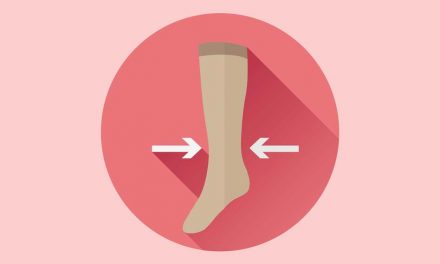
Sclerotherapy Medications for Varicose Veins – Which Are the Best?

For Vein Injections (Sclerotherapy) – Saline is No Longer Used
Let’s Eliminate the Saline Option for Sclerotherapy Right Off the Bat
When I start injecting unwanted varicose or spider veins, people usually ask, “What are you injecting – Saline?”
Saline based liquid injections into the veins are not used in the United States any more.
Saline was the best treatment available at one time but is no longer used because of its discomfort and complications.
Decades ago, hypertonic saline was used to seal off veins after it was injected inside of the veins with a needle and syringe.

But people often said things to this effect, “I was unprepared for the stinging, burning and cramping that the procedure caused—it felt like pouring salt in a wound.”
After suffering through just one session many vowed never to return again.
Happily, for current spider and varicose vein sufferers, sclerotherapy solutions are now saline-free.
The discomfort has been reduced to tiny (the smallest gauge available) needle pricks required to inject the solution.
So Which Are the Best Medicines to Inject into Varicose and Spider Veins?
At this time, only Sotradecol (sodium tetradecyl sulfate) and Asclera (polidocanol) are the only FDA approved medications for the injection treatment of unwanted veins.
Both of these medications are classified as medical detergents or surfactants.
They can be made into a foam which improves their efficacy especially when injected into larger veins.
However, doctors can ask a compounding pharmacy to make polidocanol or sotradecol in a stronger form than that which is currently FDA approved.
Effectiveness and cost are considerations. Both are equally effective in the correct dosage.
Asclera (polidocanol) is twice as expensive as Sotradecol.
Policoanol’s FDA approved form is not made in strong enough concentrations to be effective for varicose veins.
Therefore, Asclera’s brand of polidocanol is used only for spider veins.
Historically, polidocanol was first developed in Germany.
The brand name was Athoxyskerol.
It cannot be obtained in the United States.
Since this German company developed and championed this medication, it is unfortunate that it cannot be imported into this country.
It is the most commonly used sclerosant in Europe.
Therefore, it all boils down to Sotradecol for varicose veins and Sotradecol or Polidocanol for spider veins in the United States.
How Do These Medications for Sclerotherapy Actually Work?
Both of these medications kill the vein after they are injected.
Euphemisms used on some web sites use the words – close, shrink, or damage the veins.
In reality, the inner lining of the targeted vein is destroyed by the medication.
The inner lining of the vein is called the endothelium.
The endothelium supplies the oxygen and nutrients to the vein.
Once the endothelium is destroyed, blood adheres to it and becomes trapped.
This trapped blood is an irritant.
In larger veins, it causes the vein to become hard, tender, and sometimes painful after the injection.
After two weeks, many vein doctors will numb the skin over the treated vein, puncture the vein, and express this trapped blood.
That speeds up healing and minimizes hyperpigmentation of the overlying skin.
Over weeks to months, the treated vein is slowly absorbed by the body.
Modern techniques including guiding the injections with the help of ultrasound have increased the effectiveness of the results.
However, about half of insurance companies do not cover this.
Laser vs Sclerotherapy for Spider Veins
In the battle of laser vs sclerotherapy for spider veins, sclerotherapy is the clear answer.
Why?
- Laser hurts a lot more than injections.
- Laser is more expensive than injections.
- Laser results are inferior to injection results.
- Laser cannot treat the underlying “feeder” or reticular veins making the treatments with laser much less effective.
- Sclerotherapy remains the gold standard for treating spider veins.
It’s a no brainer!
People with an aversion to needles can decide to choose laser treatments to treat spider veins.
According to most vein experts, laser is inferior to sclerotherapy for spider veins.
Why Are the Medicines for Sclerotherapy Made into a Foam?
Turning the medicine into a foam makes the medication more effective when treating large veins.
Using ultrasound to guide the sclerotherapy foam can make the varicose vein treatment more effective.
Foam can touch the entire vein wall (360 degrees) and push blood out of the way better than a solution can.
That increases the surface area of the medication.
Better contact with the entire vein wall ensures that no parts of the vein’s inner lining are left untreated.
The Bottom Line
Varicose and spider veins can make legs look like a road map.
Fortunately, vein specialists have two FDA approved medications that can be used in their armamentarium to help rid you of your unwanted varicose and spider veins.
Sotradecol (sodium sotradecyl sulfate) and Asclera (polidocanol) are the two injectable solutions used by vein specialists in this country.
Saline is no longer used to inject veins.
Doctors who are determined to get a leg up (pun intended) on the competition have to choose the best sclerotherapy agent.
Both are equally effective.
It usually boils down to which agent your doctor is most familiar with and the cost.
Your doctor’s experience using these medications cannot be underestimated in determining your final results.
Choose wisely.









